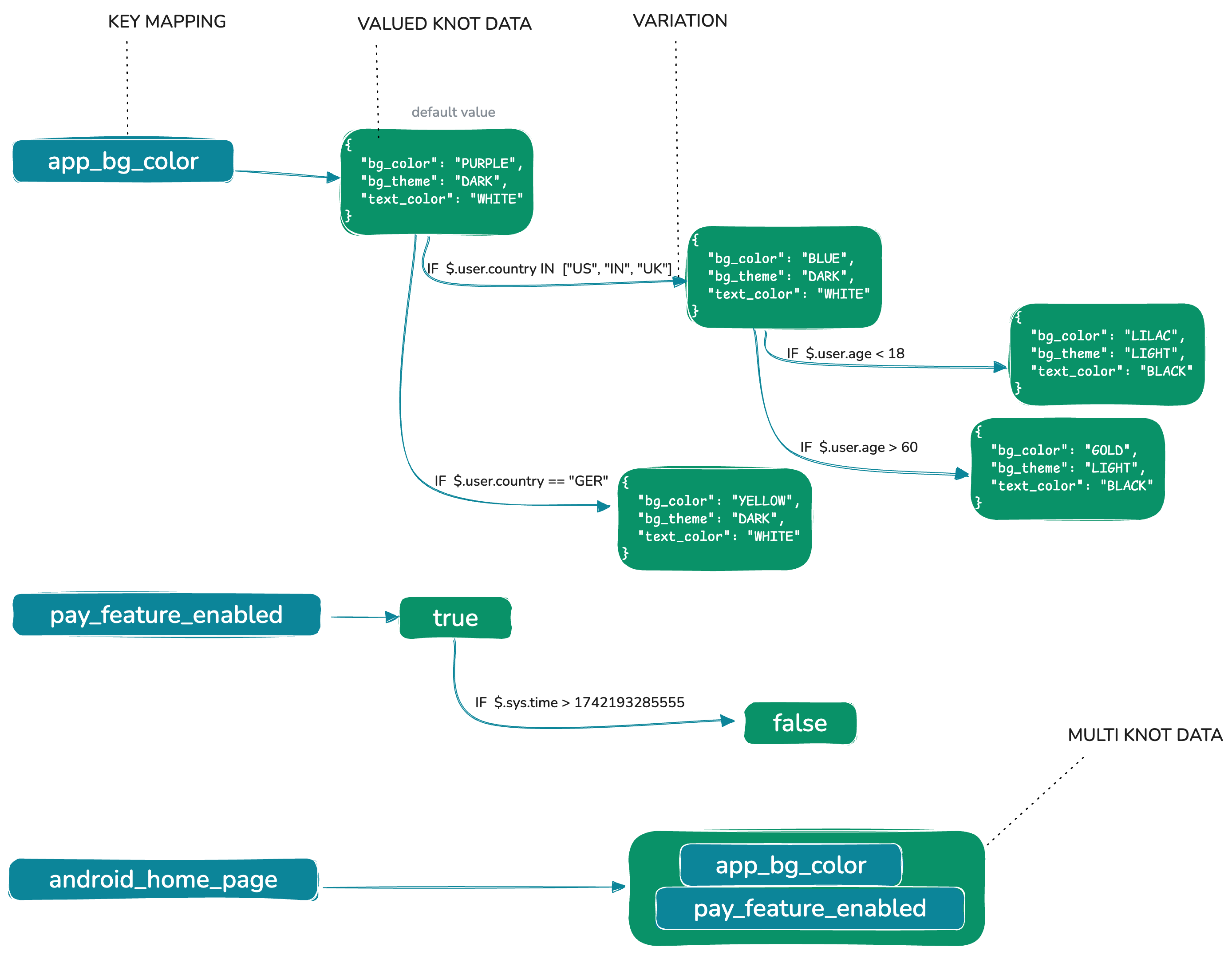Core Concepts¶
Understanding concepts that form the foundation of its tree-based rule engine is essential for effectively using Bonsai in your applications.
Key Components¶

Bonsai's architecture revolves around four primary components:
- Knot: The fundamental building block of the Bonsai tree structure
- Edge/Variation: Connections between Knots that define conditional paths
- KnotData: The content stored within a Knot
- Context: The evaluation entity against which the tree is traversed
These components work together to create a flexible and powerful rule engine that can represent complex decision logic in a structured and maintainable way.
How It Works¶
At a high level, Bonsai operates as follows:
- You create a forest of trees with key-to-data mappings
- Each tree consists of Knots connected by Edges
- Knots contain data or references to other Knots
- Edges define conditions for traversing from one Knot to another
- When evaluating a key, Bonsai traverses the tree based on the provided Context
- The traversal follows the first Edge whose conditions match the Context
- The result is the data from the final Knot reached during traversal
This structure allows for complex, nested rule definitions that can be evaluated efficiently against a given context.
Example Scenario¶
Consider a simple example of a user eligibility check:
Root Knot
├── Edge: If user.age >= 18 AND user.country IN ["US", "CA", "UK"] → Eligible Knot
└── Edge: If user.age < 18 → Ineligible Knot
In this scenario:
- The Root Knot is the starting point
- Two Edges define the conditions for eligibility
- The Eligible and Ineligible Knots contain the result values (true/false)
- When evaluating with a Context (e.g., a user with age 25 from the US), Bonsai traverses the tree and returns the appropriate result (eligible: true)